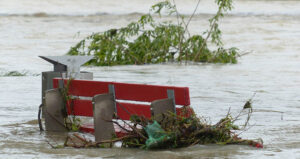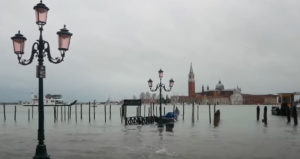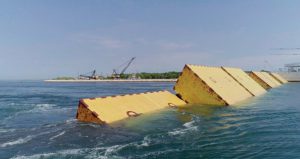Early warning systems worked well during Central European floods

-
 Editorial Team
Editorial Team
Share article:
Early warning systems worked well during the recent floods in Central Europe. Despite the higher intensity of the heavy rainfall and the larger scale of floodings, the number of fatalities is lower than in earlier floods. This is one of the conclusions of an attribution study on the event executed by researchers from Czechia, Poland, Austria, the Netherlands, Sweden, France and the UK.
Climate scientist from the World Weather Attribution organisation concluded emergency management systems across Europe had been reinforced after severe flooding over the last decades and largely worked well. Despite the higher intensity of the heavy rainfall and larger scale of the floodings, the number of fatalities (± 26) is lower than in earlier floods. In 2002 when flooding affected Germany, Austria, Czechia, Romania, Slovakia and Hungary 232 people died. The number of fatalities is also much lower than in the Western European floods in 2021 when over 200 people lost their lives.
Fatalities and damage
Despite the early warning systems at least 26 people have died over the last weeks across Poland, the Czech Republic, Austria, and Romania. Thousands of people have been evacuated from their homes. The floods have severely damaged infrastructure, including roads, bridges, and historic buildings. Three days ago, the European Union announced to contribute 10 billion euros to help the affected countries recover. The European Commission is stepping up to gather a public-private capital injection of 470 billion euros for climate adaptation. The prevention of climate damage is part of the European Water Resilience Strategy. Experts know prevention is cheaper than cure.
Storm Boris
The floodings were caused by storm Boris. The heavy rains left a trail of destruction from Romania to Poland. ‘It was a very rare event in terms of pressure distribution and an exceptional event in terms of rainfall’, writes an international team of scientists from the ClimaMeter research project in their report. They emphasize that cyclones like Boris bring up to 20% more rainfall than the average for similar past events. They add that some areas in Lower Austria saw between 300 to 350 mm of rainfall in just a few days – two to four times the average for September. They consider storm Boris as an exceptional event in terms of precipitation and a very uncommon event in terms of pressure pattern whose characteristics can mostly be ascribed to human driven climate change.
Extreme weather events more likely to occur
According to the researchers of the World Weather Attribution Organisation the weather event is very rare. It is expected to occur about once every 100 to 300 years. As the event is by far the heaviest ever recorded, the exact return time is difficult to estimate based on only about 100 years of observed data. ‘To assess if human-induced climate change influenced the heavy rainfall, we first determine if there is a trend in the observations. When looking at the regional-scale described above, heavy four-day rainfall events have become about twice as likely and 20% more intense since the pre-industrial era. The estimates become more uncertain when looking at more local scales, and are limited in places in some of the observed data’, stated the researchers.

















